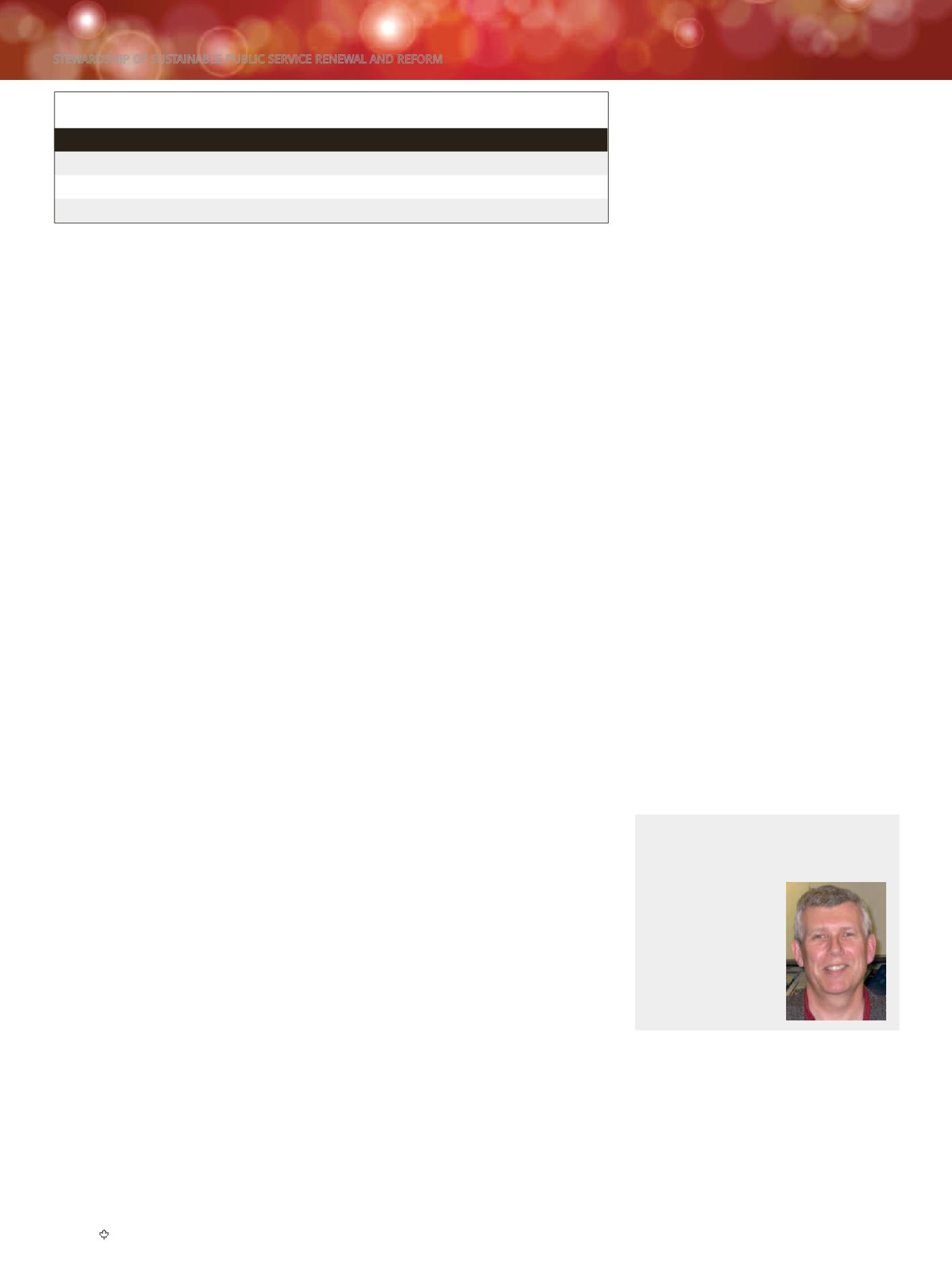
30
FMI
*
IGF JOURNAL
VOLUME 25, NO. 1
and reform is becoming increasingly
institutionalized.
Their
effectiveness
and impact are commensurate with their
leadership capabilities.
Implications for leadership role
development
In the current budget climate, many may
be inclined to go with the flow rather than
challenge assumptions, values, and the way
things are done. Instead of innovation,
‘group think’, compliance, and reactive
behaviours can become deep-seated.
Public servants must balance doing a good
job, navigating organizational context,
and managing people with mastering their
spheres of influence–upwards, across,
downwards. Some put more energy into
managing upwards at the expense of staff
and peer relationships, while others thrive
in liaison functions or task forces away
from line management.
In Canada, the middle management
community plays a strategic role in
managing people and budgets at the
interface between policy development and
program outcome. Most middle managers
love their jobs and have the passion, work
ethic, persistence, and humility to succeed.
They accept the need for change and
welcome the opportunity to improve how
government works. They are empathetic
as team leaders, underscoring the people
dimension of change. Some governments
invest in talent management programs
targeted for middle manager teamwork
and succession planning.
At the same time, middle managers worry
about lack of employee engagement and
poor senior management communication.
While they often feel engaged and informed
themselves, they grapple daily with public
service discontent with unpopular budget
decisions and alienation from not feeling
in on things. They recall and learn from
the casualties of past downsizing and
restructuring.
Prospective research
Leadership practice has been running ahead
of theory and the literature for some time.
There is a research gap in differentiating
the roles and impact of those who lead at
the centre, front, and middle. Of strategic
interest are the senior executives who
foster the climate for change and the
management teams that do most of the in-
house missionary work to renew the public
service from the middle out in times of
austerity. Understanding the relationship
between leaders and setting is important to
knowing how to improve things.
Action research is needed to consolidate
learning and to fill knowledge gaps.
Networked government, encompassing
horizontal management and collaborative
leadership, frames the issues and questions
for enquiry. Research needs to clarify
the roles, relationships, approaches, and
competencies required of public leaders.
This means using a public service lens
to better understand the politics, work,
operations, relations, and culture in
government today.
Meanwhile, the international develop
ment community discounts leadership in
its calculus, claiming that public service
behaviour cannot be predicted. Research
is needed to post markers that help make
the business case for developing the high
calibre of public sector leadership required.
It is not clear whether public service
managers are getting the right leadership
training for the job at hand. Turning
individual competence into organizational
capacity requires institutional change.
Practitioners and academics are invited to
join the discussion about how leadership
can be developed and harnessed to solve
problems.
References
Bourgon, Jocelyne (2011): A New Synthesis of
Public Administration: Serving in the 21st
Century; Montreal and Kingston: McGill–
Queen’s University Press, Queen’s Policy Studies
Series.
CAPAM (2012): CAPAM International Innovations
Awards 2011-12
http://www.capam.org/awards/
internationalinnovations/
Overseas Development Institute (2011): Mapping
progress: evidence for a new development
outlook; London: ODI.
Treasury Board of Canada Secretariat (2012):
Management Accountability Framework
http://www.tbs-sct.gc.ca/maf-crg/index-eng.asp
World Bank (2012): The World Bank’s Approach to
Public Sector Management 2011-2020: “Better
Results from Public Sector Institutions”; Public
Sector & Governance Board, Poverty Reduction
and Economic Management, The World Bank; 3
February 2012.
Leading from the middle out
ROLE
SENIOR EXECUTIVE
MIDDLE MANAGER
INTEGRITY
Model
Messenger
INNOVATION
Marketer
Inventor
ACCOUNTABILITY
Enabler
Reporter
Senior and middle managers occupy much of the same organizational and reform
space and touch many of the same people but with different levels of intimacy.
Senior executives create the environment for public service renewal and set an
example by ‘walking the talk’. Middle managers are more hands-on as message
switchers and innovators who manage people, change, and consequences. They
are mutually successful when they work the system in a symbiotic relationship as
members of the management team. Both are leaders in their own right serving the
public service as an institution.
About the Author:
John Wilkins was a Commonwealth
diplomat and a career public servant in
Canada. He is Associate
Director of the Public
Management Program
at the Schulich School
of Business, York
University (jwilkins@
schulich.yorku.ca,
johnkwilkins@gmail.
com).
STEWARDSHIP OF SUSTAINABLE PUBLIC SERVICE RENEWAL AND REFORM


